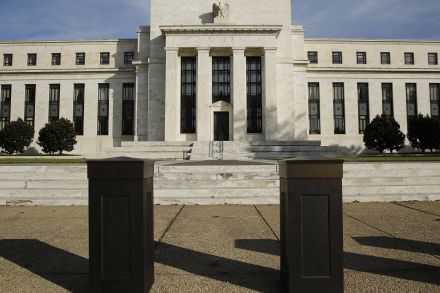-
Tips for becoming a good boxer - November 6, 2020
-
7 expert tips for making your hens night a memorable one - November 6, 2020
-
5 reasons to host your Christmas party on a cruise boat - November 6, 2020
-
What to do when you’re charged with a crime - November 6, 2020
-
Should you get one or multiple dogs? Here’s all you need to know - November 3, 2020
-
A Guide: How to Build Your Very Own Magic Mirror - February 14, 2019
-
Our Top Inspirational Baseball Stars - November 24, 2018
-
Five Tech Tools That Will Help You Turn Your Blog into a Business - November 24, 2018
-
How to Indulge on Vacation without Expanding Your Waist - November 9, 2018
-
5 Strategies for Businesses to Appeal to Today’s Increasingly Mobile-Crazed Customers - November 9, 2018
Fed Adopts Final Capital Buffer Rule for Banks
In the latest move from regulators to prevent banks from being too big to fail, eight major institutions have been hit with billions in capital surcharges.
Advertisement
Adding another piece to the Dodd-Frank regulatory overhaul, the US Federal Reserve on Monday adopted final rules that require the nation’s eight largest banks to maintain an additional layer of capital.
JPMorgan Chase & Co. still has a shortfall of as much as $12.5 billion on meeting capital rules set to be approved by the Federal Reserve on Monday. JPMorgan Chase faces the largest potential surcharge of 4.5 percent of its risk-based capital.
Reserve Board Governor Daniel Tarullo said the ruling is an important bolster to the financial framework the Obama administration has built-in the wake of the recession and that the new rules “reflect the relatively new, but very significant, principle that the stringency of prudential standards should vary with the systemic importance of regulated firms”.
The so-called “risk-based capital surcharge” would apply to banks with at least $250 billion in total assets, or at least $10 billion in foreign exposure, that rely heavily on short-term wholesale funding, including overnight loans.
The Fed also gave numerical estimates of what the rule would mean for each of the banks. Essentially, the new rule requires banks to increase their levels of equity to account for higher-risk activities, or to cut back those activities.
“They must either hold substantially more capital, reducing the likelihood that they will fail, or else they must shrink their systemic footprint, reducing the harm that their failure would do to our financial system”, Fed Chair Janet Yellen said in a statement. But banks continued to grumble that the surcharge was an unfair burden on their business.
Stricter capital requirements for banks were mandated by Congress after the financial crisis, which struck in the fall of 2008 and ignited the worst economic downturn since the Great Depression. The new surcharge requirement comes on top of a base 7% common-equity capital requirement that most banks face under global banking rules.
The Federal Reserve’s Dan Tarullo could impose tougher requirements on Wall Street’s biggest banks.
The other seven large banks covered by the new rule, including Citigroup Inc. and Bank of New York Mellon Corp., must maintain additional capital buffers of between 1% and 3.5%, the Fed said.
The agency is also set to vote on new standards for their supervision of General Electric Co.’s finance unit. If that happens, the Fed’s action will be cancelled.
Advertisement
GSIBs have to calculate their surcharges under two methods as per the final rule and use the higher of the two surcharges. Starting next January, the company must comply with a few capital, liquidity and reporting requirements. It is being permitted to do so because its parent company, General Electric, is in the midst of shrinking its finance arm and is in the process of trying to get de-designated as a nonbank SIFI.





























